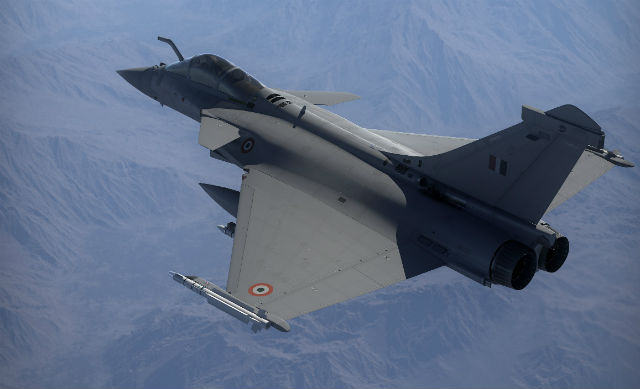The government of Indian prime minister Narendra Modi negotiated a marginally better unit price during its 2016 acquisition of 36 Dassault Rafale fighters than the nation’s original medium multi-role combat aircraft (MMRCA) deal for 126 fighters, according to a report by New Delhi’s Comptroller & Auditor General (CAG).
The CAG indicates that, overall, the 36 Rafales are 2.6% cheaper per aircraft than had been agreed under the MMRCA deal. However, this is less than the 9% savings per aircraft claimed by the Modi government to partially justify making the off-the-shelf acquisition from Dassault.
In its determination, the CAG adjusted the value of the French airframer’s 2015 bid to 2007 prices, to aid comparisons between the processes.
“This comparison of prices under 2007 and 2015 offers has posed its own difficulties, because the package offered in 2007 included the price of license production of 108 aircraft in India, while the 2015 offer included only direct flyaway aircraft, which was compared to costs of 18 flyaway aircraft,” the office says in a description of its methodology.

Dassault
The report also examined several other recent Indian defence procurements, and is broadly critical about New Delhi’s defence procurement process. The CAG contends that this lacks professionalism and fails to deliver cost-effective outcomes.
The chief objectives of the Indian negotiating team prior to the Rafale deal in September 2016 were expediting delivery of the aircraft and weapons, reducing procurement costs, obtaining offsets to support the ‘Make in India’ campaign, and securing better terms and conditions with regards to warranty and product support.
The team was able to reduce costs in areas such as special local enhancements, operational support equipment, health and usage monitoring system equipment, documentation and technical assistance, and weapons, the report says.
But in some areas the 2016 deal was less favourable: namely in engineering and support, performance-based logistics, and ground equipment, it notes.
The government’s 2016 deal to shore up Indian air force squadron strength after the collapse of the original MMRCA deal in 2015 has sparked political controversy, with political opponents accusing Modi of having conducted parallel negotiations.
The CAG report has received mixed reviews in Indian media. Some news outlets say that it vindicates the 36-aircraft deal, but others see it as an indictment of the Modi government.
New Delhi still has an urgent need for modern fighters. It has a loosely-defined requirement for 110 aircraft that has attracted renewed interest from the MMRCA contest’s original contenders. These were the Rafale, plus the Boeing F/A-18E/F Super Hornet, Eurofighter Typhoon, Lockheed Martin F-16V, RAC MiG-35, and Saab Gripen E.
Source: FlightGlobal.com


























